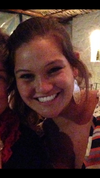BME100 s2014:W Group6 L4
| Home People Lab Write-Up 1 | Lab Write-Up 2 | Lab Write-Up 3 Lab Write-Up 4 | Lab Write-Up 5 | Lab Write-Up 6 Course Logistics For Instructors Photos Wiki Editing Help | |||||||||||||
|
GROUP 6
LAB 4 WRITE-UPInitial Machine TestingThis device called Open PCR, is a machine that can polymerase chain reactions to separate a DNA strand and use one strand to create a complimentary strand. This results in a new double strand DNA molecule, that is initially identical to the first DNA molecule. This is made possible by the machine heating the test tubes with primer 1, primer 2, polymerase, nucleotides, DNA, and DNA polymerase ad also subsequently cooling them. These heating and cooling procedures with the various contents in the test tubes creates an environment that allows for this DNA molecule replication. The machine is run by connecting it to a computer using a USB cable and running a program that tells the machine the specifics of the desired experiment. Like the number of cycles and temperature to be run at. The machine is also hooked on its own power supply to carry out these processes. Once the experiment is done, the machine displays the results on the blue screen on the machine.
When we unplugged (part 3) from (part 6), the machine did not display the necessar information on the blue screen that's on top of the thermocycle. When we unplugged the white wire that connects (part 6) to (part 2), the machine the blue display screen wold not display the temperature of the PCR test tubes Test Run March 19th, 2014. The internal components of the machine was tested to see if they are in working conditions, and to ensure that there is no malfunction. The machine was then loaded with empty test tubes to create a sample run using the software on the computer to ensure the mother board on the machine works properly. The machine run was simple and easy to be done since the required information for the run was already given and the internal components of the PCR were not faulty. After the machine completed its test run (16 minutes and 30 cycles) we concluded that the machine passed the test.
ProtocolsThermal Cycler Program
The two patient ID's are 67618 and 78379 respecively. The positive control is labelled (PC) and the negative control is labelled (NC). Patient 1's samples are labelled P11, P12, and P13. In a similar manner Patient 2's samples are labelled P21, P22, P23.
PCR Reaction Mix
Research and DevelopmentPCR - The Underlying Technology Component functions The template DNA is the strand of DNA from which another is copied. Primers allow the DNA polymerase to attach to the DNA strand. Taq Polymerase adds nucleotides to the template DNA strand and provide beginnings and ends. Deoxyribonucleotides are added to the template stands of DNA to form a new strand of anti-parallel DNA. Changes made to the components during thermocycle The initial step will occur for 3 minutes at 95ºC. This step will heat the solution to the desired 95ºC. The next step will be to denature the DNA for 30 seconds at 95ºC. This will allow for the 2 DNA strands to separate. The next step is to anneal the DNA for 30 seconds at 57ºC. In this step the primers attach to the DNA strands before the strands rejoin. Next the extension period will last for 30 seconds at 72ºC. In this step the polymerase is activated, causing the nucleotides to be added to the strand. The final step will last for 3 minutes at 72ºC, which prepares the hot plate further and ensures accuracy. Lastly, the final hold will occur at 4ºC and will stabilize the DNA. DNA structure DNA is made up of four types of molecules called nucleotides, designated as Adenine (A), Thymine (T), Cytosine (C) and Guanine (G). base-pairing, which is driven by hydrogen bonding, will allow the DNA strands to stick together. This will also allow primers to stick to the template DNA strand. Adenine will always pair with Thymine, and Cytosine with Guanine. For example, if a DNA sequence is ATGAC, the complimentary base pair would be TACTG.
| |||||||||||||




